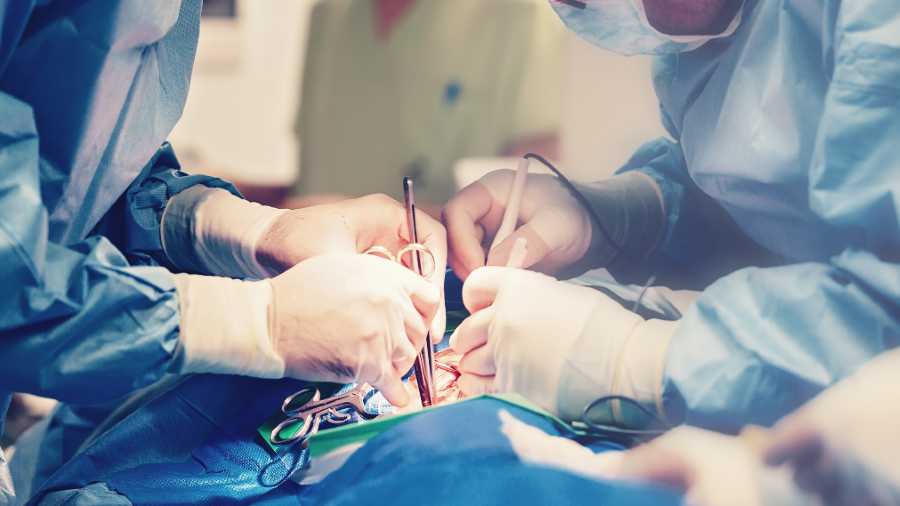A device that could reduce the chances of failure of surgeries for fixing hernia is being used in a hospital in Kolkata.
A surgeon at the RN Tagore International Institute of Cardiac Sciences has already used it on two patients and one more surgery is scheduled in the hospital later this month.
Balasubramaniam Ramana, a visiting consultant at the Institute of Robotic Surgery at RN Tagore Institute, said that the percentage of failure of procedures to fix hernia was quite high. Hernia is the bulging out of internal organs of the human body through a weakness in the muscles or tissue.
There are multiple reasons for a hernia that include poor stitching of the abdominal layer after surgery.
People who are obese, those with weak or poor quality tissue and women who have had multiple C-section deliveries are vulnerable to hernia. Hernias are fairly common in India. The chance of hernia is at least 25 per cent in males in a lifetime. On an average, 10-12 per cent of any adult population in our country suffers from some hernia problem or the other.
Ramana said that following an open abdomen surgery the edges of the abdominal layer tend to pull apart.
As a result, the stitches often loosen and a hole or gap develops through the sutures. This gap becomes bigger over a period of time. People then go for hernia-fixing surgeries. “If the first surgery to fix the hernia is not successful, it would make subsequent efforts more difficult and liable to failure,” he said.
The new process, which has been done on two patients, pulls the abdominal layer vertically upwards for some time before stitching the separated parts together.
“Experience and evidence have shown that the tendency of the two sides of the cut abdominal layer to pull apart is not there if the muscle is pulled up vertically. Consequently, the stitched-together parts do not fall apart and the surgery is successful. This is a new process being done with a device that is new in our country,” he said.
Ramana said currently the process is being implemented on a select few patients who are giving their consent to the use. The device is expected to be available for commercial use after a few months after regulatory approvals for wide commercial use is given.
